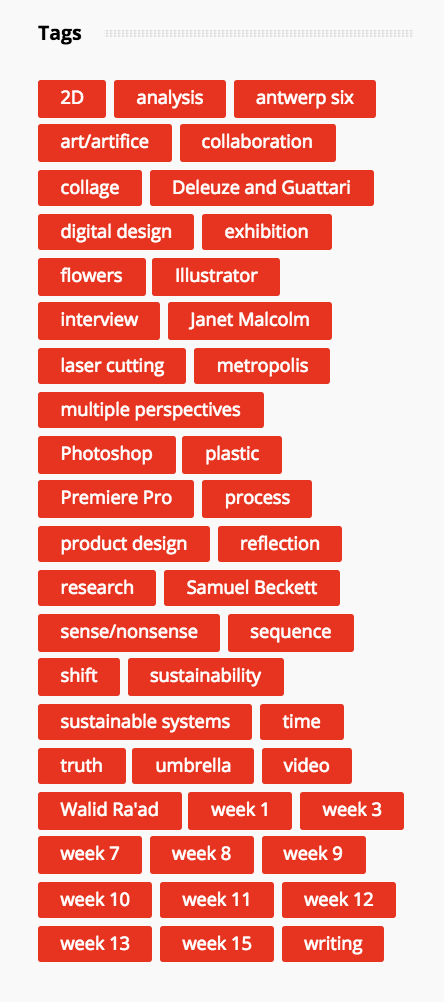Organizing your Content
Organizing your Content is a form of curation.
As you develop your Learning Portfolio, think of yourself as its most important audience and user. How can you organize and keep track of your various projects, assignments, and experiences in ways that will allow you – over time – to reflect upon them? Also, consider what’s the most interesting and informative way for other’s (your classmates, professors) to see and understand your work?
Categories and Tags
Categories are a necessary and useful way to curate your Learning Portfolio. They will not only be helpful to you but also for your instructors to find the work you’ve created for their class. Here’s a short video explaining how categories work.
Tags are another very useful tools for organizing your content on the LP and you will want to use tags for each post you create. Consider how you might want to look back on work you’ve completed over several years, to see your progress over time, revealing connections among your classes and projects, and learning more about yourself. For example, your work and interests may focus on the themes of memory, or sustainability, or risk, or communications, or drawing, or poetry, or all of these. Add tags that make sense to you, assuming you will return to review past work. They will also be valuable to your instructors and others with whom you might share your work.
Here’s an example of a bunch of tags (called a tag cloud).
